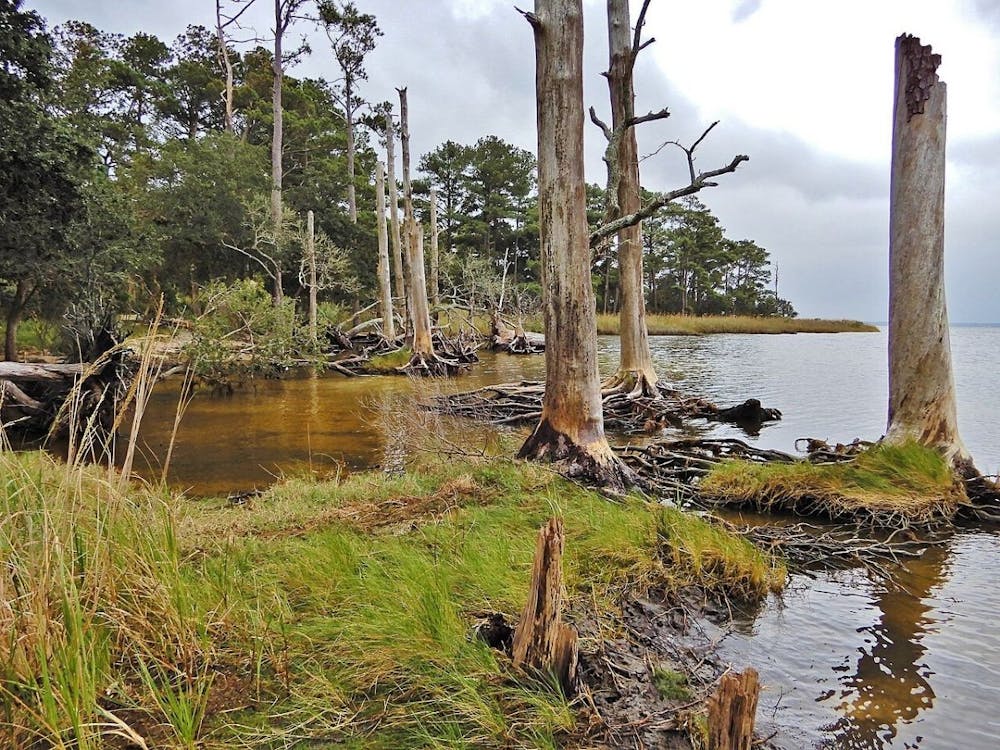Far from getting bogged down, the Duke University Wetland Center is planning new partnerships to expand its operations.
Under the leadership of Curtis Richardson, director of the DUWC and professor of resource ecology at the Nicholas School of the Environment, Duke’s prowess in the field of wetland conservation and rehabilitation has grown. Now, the center plans to partner with Duke’s Marine Lab and Brian Silliman, the Rachel Carson professor of marine conservation biology at the Nicholas School.
Silliman has conducted his own research on marine wetlands and seagrasses at his eponymous lab since 2013. He will become DUWC director upon Richardson’s retirement, according to Richardson.
“We have had similar missions for decades, and just operated in different geographies,” Silliman wrote in an email. “By combining forces, the geographic and conceptual framework of the [DUWC] will be greatly expanded to address similar goals.”
The DUWC will remain based in Durham, but access to Silliman’s resources in Beaufort, N.C., furthers the center’s mission of ecological restoration.
Much of the center’s primary investment will focus on the development of the Carolina Ranch, a 10,000-acre peat-soil bog. After repairing the peat soil, which will then trap carbon more efficiently, the DUWC will look to sell the subsequent carbon credits to businesses.
Beyond the Carolina Ranch, the DUWC will work on Duke Restore, a research initiative that aims to partner students, faculty, post-doctorates and local residents. The initiative will begin with a particular concentration on North Carolina wetlands, which incorporates ecosystems ranging from terrestrial watersheds to marine oyster reefs acting as barriers along the coast. Nevertheless, Silliman believes that growth into South Carolina and the rest of the southeastern seaboard is still a possibility.
“Given that the world is asking for an innovative leader to step forward to produce new technology and designs to support massive-scale cultivation of ecosystems like humans have done over the for food, my hope is that Duke University, through Duke Restore, can become one of those global leaders,” Silliman wrote. “The potential for workforce growth in this sector for engineers, social scientists and natural scientists is immense.”
Both Richardson and Silliman emphasized that Duke’s campus is not exempt from improvement when it comes to carbon emissions. In order to reach carbon neutrality by 2024, they suggest the refurbishment of antiquated structures, the installation of LEED platinum lights, investment in cleaner energy sources such as biogas and less meat consumption on campus.
The DUWC was designed to familiarize undergraduates to hands-on wetland restoration, with Silliman’s previous courses being held not only in the classroom but also in seagrass beds, marshes and even in Australia’s Great Barrier Reef.
“These field classes are key to educating the next generation of students on the services and functions wetland ecosystems provide our planet,” Richardson wrote in an email. “There is no classroom experience that can match going into the field and studying the ecology of plants, animals and ecosystems first hand.”
While this work may be exhausting, the intellectual stimulation and tangible benefits continue to attract Richardson to the wetlands. As he always reminds his students, “Ecosystem restoration is not rocket science––it is far more complex.”
Get The Chronicle straight to your inbox
Signup for our weekly newsletter. Cancel at any time.

